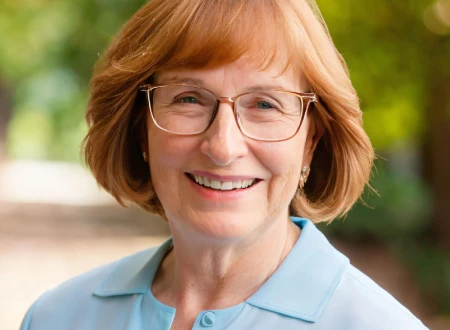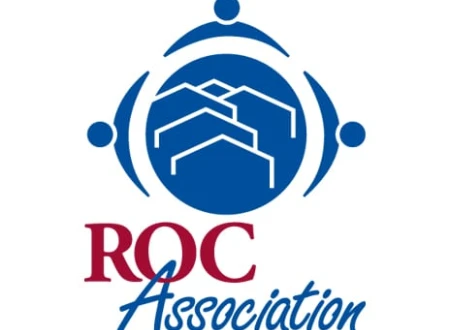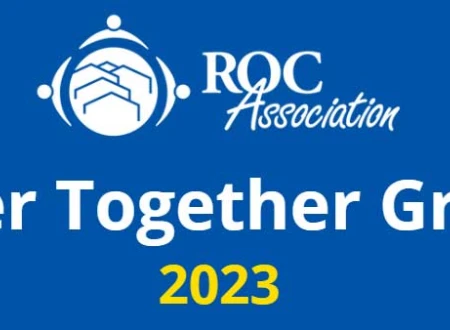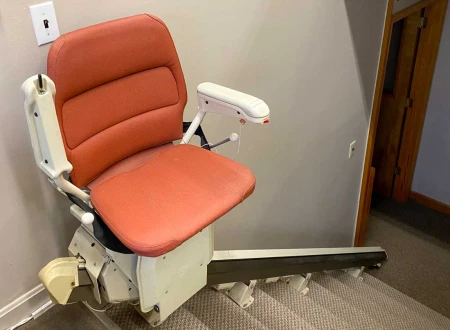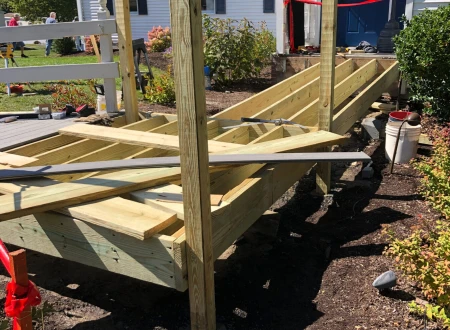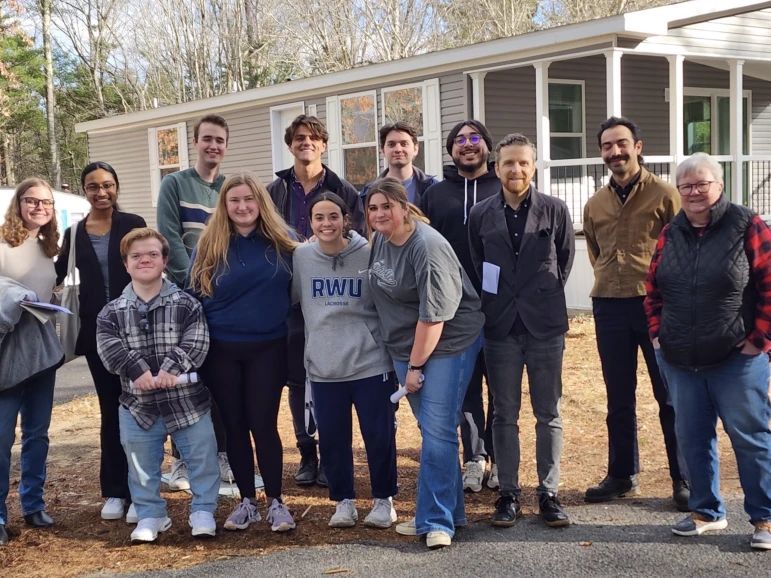
Crouched low to the ground, a group of architecture students shines their flashlights beneath a newly placed manufactured home. The sun peeks through an overcast sky. For an unpredictable month, it’s a lovely day. With the new home for sale and empty for now, the timing of this visit couldn’t be more perfect.
An hour-long phone call led Deb Winiewicz, former Board President at Halifax Mobile Home Estates Association in Mass., to invite Professor Ryan Ludwig from Roger Williams University and his architecture design studio for a tour of her community on March 25th.
Winiewicz, a leader in the ROC Association and in her own community, was eager to host the students. Halifax residents Dick Yergeau, Board President, Deb Lang, Board Treasurer, Sheila Carroll, and Gene Dalton joined the tour as well.
”The group was very attentive,” Yergeau said. “They were curious and asked a lot of questions about the community. It was refreshing.”
These questions were inspired by their project for the semester: develop a next-generation manufactured home that tackles challenges in the factory-built process and challenges in communities. Ludwig isn’t just asking the students to consider infrastructure; he wants them to think about the organization of the homes, how much land each one has, how close they are to the street and to each other, and incorporating space for a community center to foster engagement. Social interaction, Ludwig believes, is a necessary piece of building community resiliency.
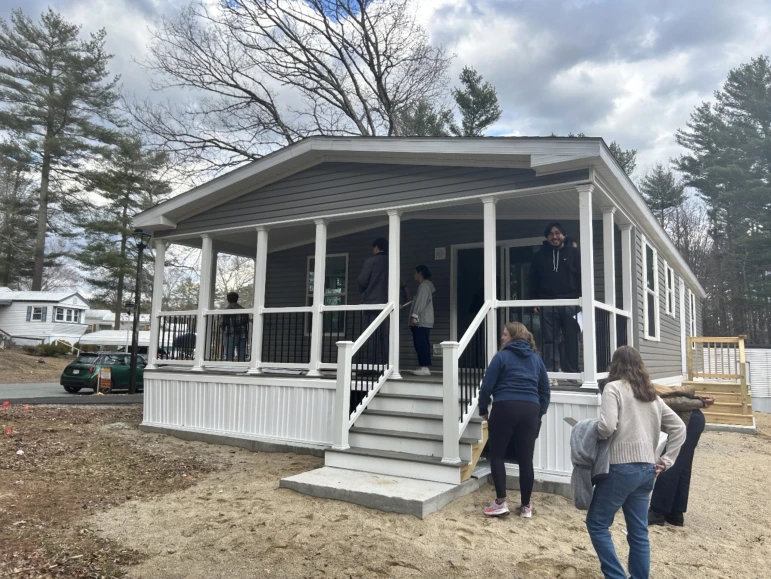
Author of a book titled Beyond Sustainable: Architecture’s Evolving Environments of Habitation and currently conducting research for his next book called The Architecture of a Decent Home, Ludwig has done a deep dive into manufactured housing and, more specifically, Resident Owned Communities (ROCs) as the key to affordability and sustainability for the future.
“[The ROC model] has this inherent connectivity,” Ludwig said. “And so, from a long-term kind of resiliency, sustainability focus, I think that becomes really fundamental.”
Many residents throughout ROC USA’s network have witnessed changes in their communities after becoming resident-owned. People who lived in these communities for years before transitioning to a ROC didn’t speak to more than a handful of their neighbors. Now, they give testimony to how they know just about every person in the community, waving to everyone they see in passing, sharing meals, and hosting community events. The shift may be gradual at times, but the long-term effects are impactful, as Ludwig’s research revealed.
Ludwig gave his students five scenarios to choose from, all based off various projects included in applications for the Department of Housing and Urban Development’s (HUD) Preservation and Reinvestment Initiative for Community Enhancement (PRICE) program. His desire for the students to operate within real-world projects is a testament to how seriously he takes this studio and the work it produces.
But to their credit, the students take it equally as seriously.
Some of their proposals challenge the way the HUD Code is currently written. The students inspected the underbelly of the newly placed manufactured home and saw the concrete foundation, the exposed joint connecting the two pieces of the double-wide home, and the chassis. A permanent metal frame beneath the home, the chassis is used to transport the home during delivery and is required to remain underneath it according to HUD Code.
However, the students pointed out that the chassis serves as an architectural limiter. Laws and zoning codes restrict manufactured homes because of features like this. Their proposals call for solutions and alternatives to this prohibitive rule.

The most fruitful part of the tour was the opportunity for the students to speak to some of the residents. One student, Sebastian Headrick, a first-year graduate student at RWU interning at a residential firm, reflected on how nice it was to interface with the residents. His conversations spurred thoughts on how to architecturally integrate more community involvement.
Chris Cervantes, a technical assistance provider at Cooperative Development Institute (CDI) working with Halifax Estates and also involved in the tour, emphasized the significance of students and people in academia getting more involved in manufactured housing and ROCs.
“It’s not just the statistics that are important,” Cervantes said. “Seeing the people is important– how they live, how they come to consensus, how they work together, and what resources they have available to them.”
As they rode on golf carts through Halifax Estates, a 430-home community with four miles of roads, the students had the chance to see houses of all different styles. RWU senior Lauren Canata saw that, along with a sense of community, people’s expression of their individuality was palpable. With ample lawn space and a good distance between homes and from the road, residents have creative freedom. The original manufactured home community (MHC) developer was generous with spacing, Sophia Golden, also a senior at RWU, remarked. Not every community is as lucky.
Part of the design studio’s attraction was the uniqueness of the topic; Ludwig pointed out that architects don’t have much of a role in manufactured housing, and many of the students didn’t know much about the industry coming into the course. They knew even less about resident ownership.
With Ludwig posing questions like “How can design help? How can we make things more efficient? How can we challenge these conventions around domestic spaces and organization?” his students are on track to becoming a new generation of architects that transforms the way MHCs are designed and manufactured. As Winiewicz said, “They are the future of manufactured housing.”
This design studio is a taste of how, if the focus shifts to the people in these communities and not just the physical architecture and infrastructure, but also the social layout and the foundation of engagement, every aspect of an MHC can be improved. Future MHCs have the potential to be designed with the same thoughtfulness as Halifax Estates.
To achieve this thoughtfulness and to shift the focus, more community tours like this one need to happen. Both the residents and the students benefited from the conversations had during the visit. Sometimes all it takes is a phone call and an invitation.
With visibility and education comes the destigmatization of manufactured housing and MHCs, and the people who live in them. Design can and should include compassion. If more architects involve themselves in the creation and design of MHCs, this vital piece of affordable housing could blossom further – if more architects adopt the same mindset as Canata when she said, “These aren’t houses; they’re homes.”

